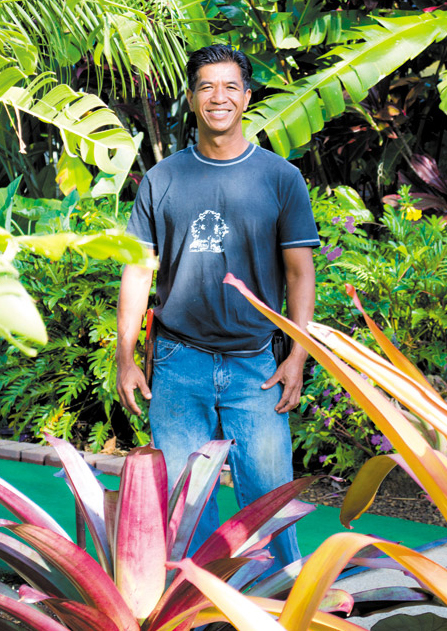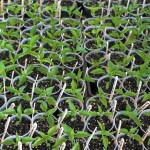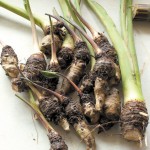An Agroforestry Primer
Creating an edible forest landscape is the goal of a workshop to be held Saturday and SundayYou can’t go wrong planting a forest. When the earth is plagued with deforestation and increasing levels of carbon dioxide, a forest that also provides food gives a double dose of environmental worthiness. The method is called agroforesty, where land is used in a way that supplies optimal conditions for trees and agriculture that are able to work together as one viable ecosystem. This process increases food diversity in a productive, sustainable fashion.
Anaina Hou Community Park (AHCP) in Kilauea, where Kauai Mini Golf is located, is hosting an inaugural workshop on Creative Agroforestry for Food Production in Home, Farm and Landscapes Saturday and Sunday (April 25 and 26). A team of local and statewide experts in the field will share their strategies and methods for creating and maintaining an edible forest landscape based on participants’ individual needs. (See examples below.)
One of the instructors is Alvin “Bino” Castelo, botanical gardens manager at Anaina Hou Community Park. He has been working with native Hawaiian plants for more than 12 years.
“I love inspiring others and sharing my knowledge, especially because of how unique the Islands are and how close to its resources we are,” says Castelo, who also sits on the board of Regenerations International Botanical Garden — another organization to be represented at the workshop.
- A sampling of seedlings recently exchanged at Anaina Hou Community Park
- Taro is an essential part of a traditional Polynesian agroforest. Anaina Hou photos
Castelo supports local agriculture on the North Shore and also was part of AHCP’s seed exchange last month. The 15th biannual exchange allowed community members to bring seeds and plants to trade with one another, akin to a plant “potluck.”
“It is important to educate about saving your seeds and sharing them, encouraging diversity in our local garden,” says Castelo.
The plant aficionado would like to see more events like the seed exchange and agroforestry workshop on Kauai.
“Anaina Hou’s mission is to enrich the lives of our island community through education, recreation and agriculture while sharing our cultural values and the spirit of aloha,” he says. “The seed exchange aligns with my beliefs and values, and is what I want to see more of here on the North Shore. I am passionate about plants and serving my community.
“It is almost a dream come true to see all the plants you fantasize about all in one place, trading among your community and sharing the resources.”
Castelo hopes these events will inspire people to support island agriculture and raise more awareness about the possibilities of harvesting locally grown produce.
“It is exciting that we are at a point where we can still make a change toward being sustainable,” he says, “and I believe through education and sharing knowledge that has been passed down to our keiki and community we can create a sustainable community.”
Castelo is scheduled to speak about the “Cultural Dimensions of Pacific Island Agroforests.” To register for the workshop and for more information, including a list of instructors, visit agroforest.org.
Example 1: Traditional Polynesian Agroforest System
Trees: ulu (breadfruit), ohia ai (mountain apple), maia (banana)
Understory: ko (sugarcane), awa (kava kava), pele (edible hibiscus)
Root crops: uala (sweet potato), kalo (taro), uhi (yam)
Windbreak/border/mulch-producing trees: hala, kukui, hau
Example 2: Contemporary Tropical Agroforestry System
Trees: mamey sapote, jackfruit, citrus, avocado
Understory: cacao, coffee, winter squash, papaya, poha berry
Root crops: tapioca (cassava), yacon (Bolivian sunroot)
Vines: Jamaican liliko‘i, chayote squash
cocomidweek@gmail.com






